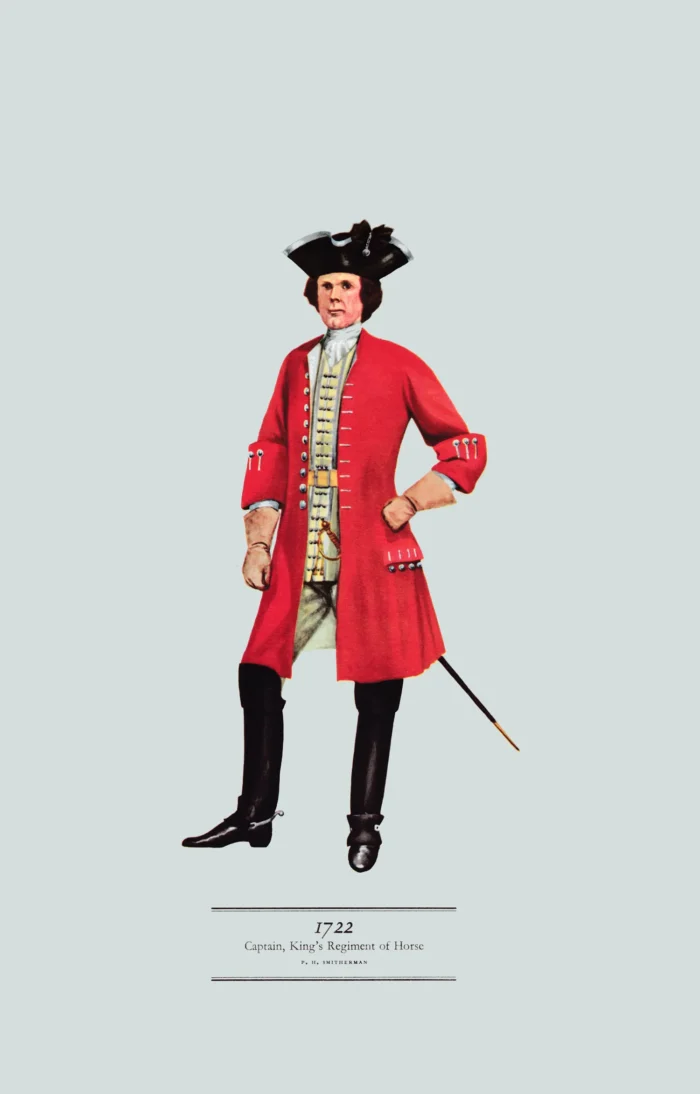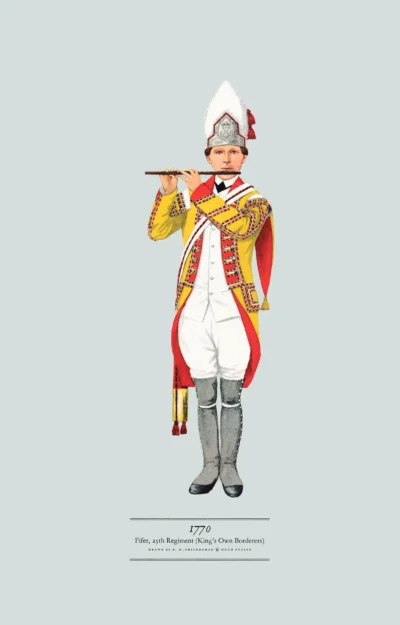Captain, King’s Regiment of Horse, 1722 (King’s Dragoon Guards)
£12.00
Raised 1685; from 1959 1st the Queen’s Dragoon Guards – QDG (scroll down for a more detailed Description)
Published 1962 by © Hugh Evelyn Limited; drawn by Colonel Philip Henry Smitherman (1910-1982), Royal Corps of Signals
Size: c. 24.5 x 37.5 cm [9 ½ ″ x 14 ½ ″] (may vary slightly from printers’ cut 50 years ago)
Printed on on medium cardstock weighing 144 g/sm2 faced in light greyish blue (RGB c. d5dede)
Print is STANDARD size – shipping is the same for 1 to 10 prints (based on largest print size in your order) – see Shipping & Returns.
In stock
Description
This Regiment is the senior regiment of line cavalry in the army and was raised by Sir John Lanier in 1685 as the 2nd Queen’s Regiment of Horse, became the King’s Regiment of Horse in 1714, and the 1st King’s Dragoon Guards in 1746. The regiment served as horse cavalry until 1937 when it was mechanised with light tanks. It became part of the Royal Armoured Corps in 1939. After service in the First and Second World Wars, the regiment amalgamated with the 2nd Dragoon Guards (Queen’s Bays) in 1959 to form the 1st The Queen’s Dragoon Guards. Their battle honours include the major battles won on the continent under Marlborough and Wellington, in the Crimea, China, and South Africa, as well as those of the last two World Wars. This Officer is wearing the dress worn by officers on parade in peace time. A military coat, it is based on the civilian fashions of the time. While elegant and probably comfortable, there is no evidence such a coat was officially sanctioned, although it was worn. Officers were not accustomed to wearing what they should and wore what they liked, and certainly no official order of dress could be more elegant or becoming than this. The British officer, of course, has always treated dress regulations as a basis for argument rather than as something to be obeyed implicitly. Those who fought in the last war will remember the orders forbidding the wearing of collars and ties with battle-dress, and the threats uttered against those who wore the khaki forage cap or the Sam Browne belt. The orders and threats were ignored, and the articles of dress survived.
Additional information
| Weight | 0.0123 kg |
|---|---|
| Dimensions | 23 × 37 cm |





